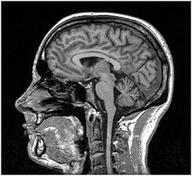CT vs MRI vs Ultrasound: Advantages and Disadvantages
Advertisement
This article explores the pros and cons of three common medical imaging techniques: CT scans, MRI scans, and ultrasound scans. Each method uses a different approach to create images of the inside of the body, making them suitable for various diagnostic purposes.
Introduction to Imaging Techniques
-
CT Scan (Computed Tomography): This technique utilizes X-rays to create detailed, cross-sectional images. A CT scanner takes multiple X-ray images from different angles, and a computer then compiles them into a 3D representation of the body.
-
MRI Scan (Magnetic Resonance Imaging): MRI uses the principles of magnetism to generate images. Like CT, it produces a 3D view of the body, but relies on different physical properties to do so.
-
Ultrasound Scan: This technique uses high-frequency sound waves to create images. The waves are bounced off the body’s tissues, and the resulting echoes are converted into a visual representation.
For a more detailed comparison, you can also refer to CT scanner vs MRI scanner vs Ultrasound scanner.
CT Scan: Advantages and Disadvantages
Advantages of CT Scan

- Excellent for Bone Imaging: CT scans are particularly effective at visualizing bony structures and detecting bone lesions.
- Speed: CT scans are relatively quick, often taking only 5-10 minutes to complete.
- Moderate Cost: Compared to MRI, CT scans typically fall into a medium price range.
- Low Irradiation Risk: While CT scans do use radiation, the risk associated with a single scan is generally low.
Disadvantages of CT Scan
- Poor Visualization of Certain Lesions: CT scans are not as effective at imaging demyelinating lesions (related to nerve damage).
- Radiation Exposure: The use of ionizing radiation carries a potential risk.
- Sensitive to Acute Hemorrhage: CT scans can be sensitive to acute hemorrhages, which may limit their effectiveness for certain conditions.
MRI Scan: Advantages and Disadvantages
Advantages of MRI Scan

- No Radiation: MRI scans do not use ionizing radiation, making them a safer option in that respect.
- Superior Image Quality: MRI provides higher resolution images compared to CT, allowing doctors to distinguish between different tissue types more clearly.
Disadvantages of MRI Scan
- High Cost: MRI scans are typically the most expensive of the three imaging techniques.
- Metal Precautions: Patients must be carefully screened for metal implants or objects, as these can interfere with the scan.
- Magnetic Field Sensitivity: Electronic devices should not be brought into the MRI room, as the strong magnetic fields can damage them.
Ultrasound Scan: Advantages and Disadvantages
Advantages of Ultrasound Scan

- Safety: Ultrasound is a safe and non-invasive method that does not use ionizing radiation.
- Real-Time Imaging: The images are displayed in real-time, allowing medical professionals to observe movement of internal body parts and capture the desired views.
- Good for Soft Tissues: Ultrasound is particularly good at visualizing soft tissues that might not show up well on CT scans.
- Ideal for Pregnancy Monitoring: It is the preferred method for examining unborn babies during pregnancy.
Disadvantages of Ultrasound Scan
- Limited Penetration: Ultrasound waves cannot penetrate bone or large amounts of tissue well, making it unsuitable for deep body scans.
- Gas Interference: The presence of gas or air in the bowels can disrupt ultrasound waves, limiting its effectiveness for imaging certain organs.
Advertisement
 T&M
T&M 


